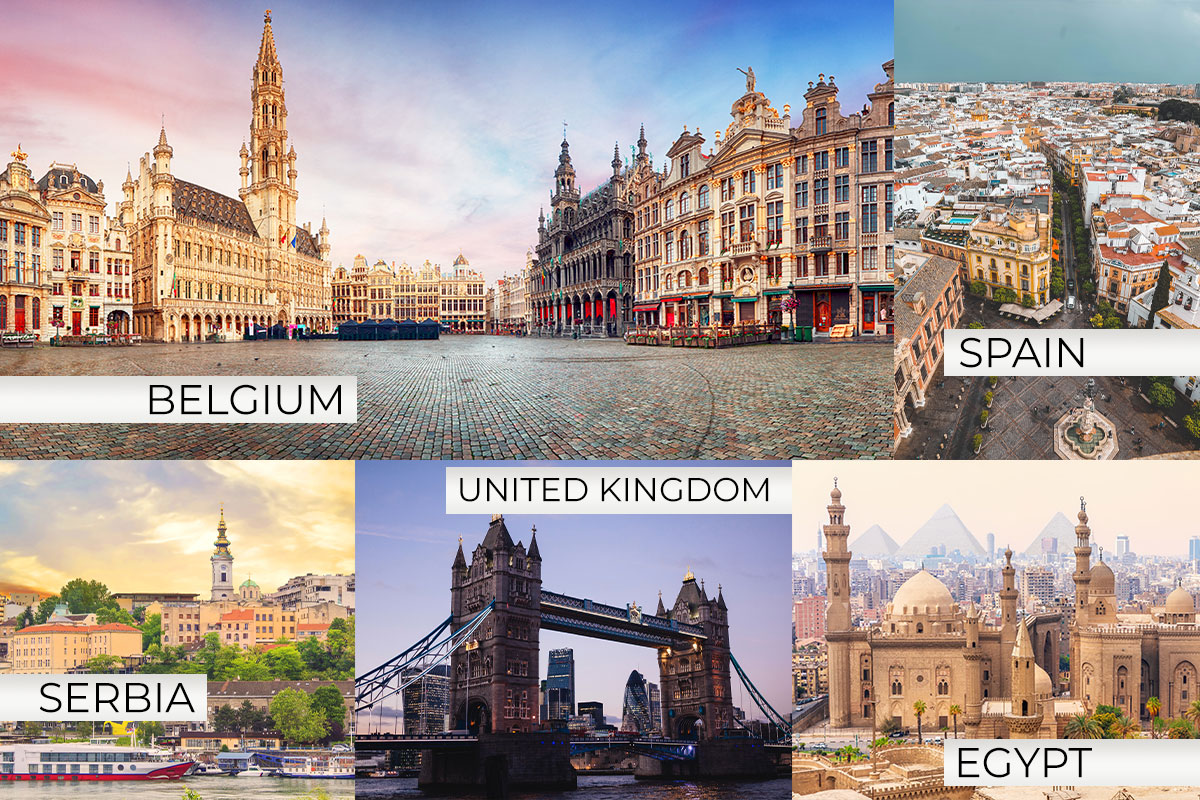Lisbon: Europe’s Best Kept Secret is a Traveler’s Dream

With 290 days of sunshine a year, it’s no surprise that Portugal’s capital city, Lisbon, has become one of the top travel destinations in Europe – it was recently ranked #6 in U.S. News & World Report’s Best Cheap European Vacations (Why Go To Lisbon, n.d.). Lisbon’s colorful architecture, beaches, century-old buildings, and blue skies provide for abundant sightseeing opportunities and make it one of the best year-round cities in the world to visit.
Lisbon, or Lisboa, as it is called in its native language of Portuguese, is one of the oldest cities in western Europe. Until recently, it was overlooked by its European counterparts, but this is no longer the case. Tourists from around the world have discovered that aside from Lisbon’s wonderful climate, Lisbon is economical, safe, and loaded with wonderful gastronomy. Although Lisbon is one of the most historical cities in western Europe, it remains one of the best-kept secrets for travel enthusiasts.
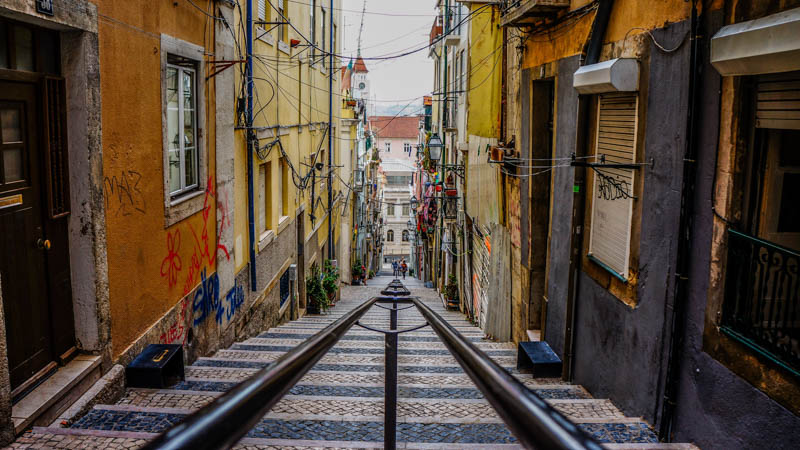
Getting To and From Lisbon
Lisbon Airport, also known as Portela Airport, is one of three international airports in Portugal. The other two are located in the cities of Faro and Porto. Lisbon Airport is the main international entry point and located approximately seven kilometers from the city center.
There are several ways that you can get to and from the airport in Lisbon. The Metro (subway) is the most economical option. The Lisbon Airport Metro is conveniently located in the airport and will take you to downtown Lisbon for 1.50 Euros in only 20 minutes.
Uber and other ride sharing services are available at Lisbon Airport. These options are an efficient and convenient way to get to and from the airport. Additionally, you can find taxis at affordable rates outside the departures and arrival terminals. Note that taxis often charge luggage and/or pet fees, so be sure to ask about the price in advance to avoid unexpected charges.
Getting Around Lisbon
Historic Electric Trams (Remodelados)
The historic electric tram system is the most fun and unique way to get around the city. The electric trams, which are known as the remodelados, began in 1901 to provide a unique way of accessing the narrow streets of the most historic and scenic parts of the city where the metro has no access. The quaint yellow trams are often packed with locals and tourists alike, but provide a truly authentic experience and feeling that you have stepped back in time.
The number 28 tram route is the most popular route (Praça Martin Moniz – Campo Ourique) of the remodelado trams as it passes through the colorful and popular districts of Graca, Alfama, Baixa, and Estrela. A single fare ticket will cost you 3.00 Euros, or you can purchase a 24-hour public transportation ticket for 6.40 Euros and have all-day access to the tram, metro, and buses. Note that the 24-hour ticket can only be purchased at metro stations.
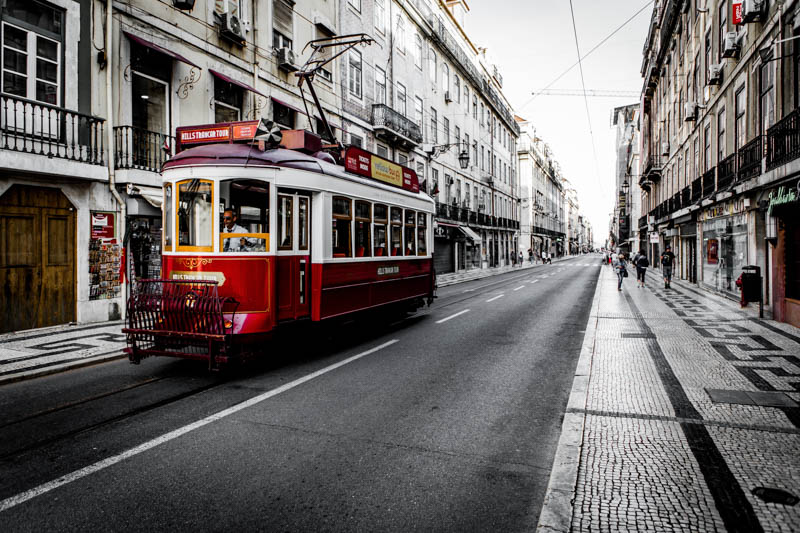
Lisbon Metro (Subway)
The metro or subway is another great option for getting in and around Lisbon. Whether you are taking in a futebol game at the Benfica Stadium (Estadio Sport Lisboa e Benifica), travel to the Baixa (the historical heart of Lisbon), or connect to the train to go to the neighboring beaches (Cais de Sodré Station), there are a total of 4 metro lines (blue, yellow, green, and yellow) with 55 stations around the city covering 25 miles. The metro system is expansive, generally efficient, and a good way to see the city on a limited budget.
The Lisbon Train (Railway)
Want to take a day trip to one of the beaches located near the neighboring towns of Carcavelos, Estoril, or Cascais? Or maybe you want to visit the 19th-century Pena National Palace in the resort town of Sintra? The train is an inexpensive and efficient way to get to and from all these places. The cost of the trip varies depending on the destination and whether or not it is a return trip.
If you are looking to travel to other parts of Portugal, the train is a wonderful way to travel. There are trains to popular destinations like Porto and Algarve (Oriente Station) regularly and many other destinations around Portugal. Services are also offered to the neighboring country of Spain (Santa Apolónia Station).
The Oriente Station is a destination in itself. The massive train station was designed for the for the 1998 Lisbon Expo. The unique design boasts a unique leaf-like geometric canopy that is stunning both day and night.
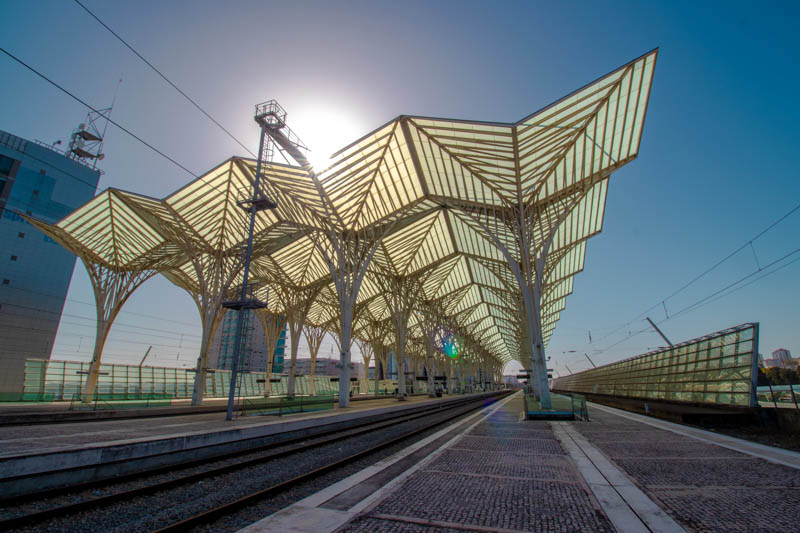
Tuk Tuk in Lisbon
The famous mode of transportation in Asia has made its way to Lisbon. These three-wheeled vehicles have become popular in Lisbon due to its narrow and packed streets. They offer a cool and fun way of seeing the city, but they aren’t cheap: expect to pay anywhere between 45 to 80 Euros for a two to three hour ride.
Lisbon Ferry
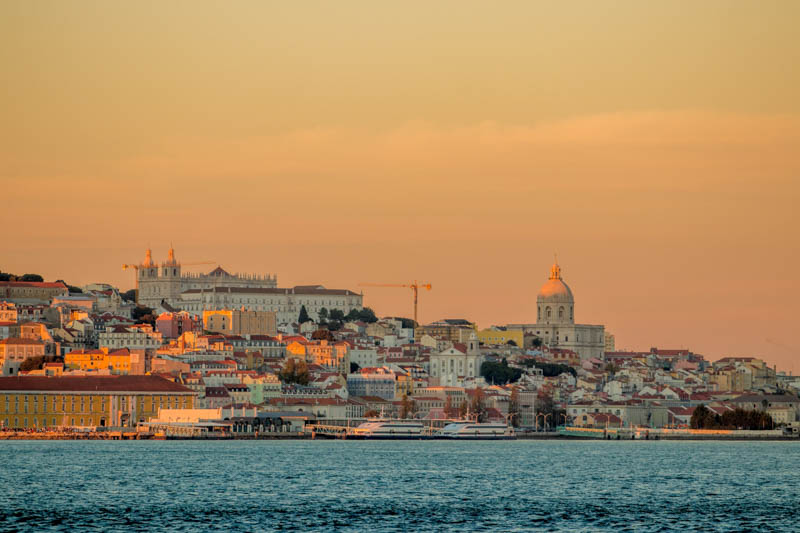
The ferries of Lisbon are a great way to get views of the city, including views of Cristo Rei statue, a smaller version of the Christ the Redeemer statue located in Rio de Janeiro. The ferries are a short service that take you across Tagus River mouth, where it empties into the Atlantic ocean. There are five different ferry routes, but only one recommended route for tourists. The Cais do Sodré to Cacilhas route provides all the views you could ask for and lands in the square of Cacilhas, known for its famed seafood restaurants.
Europe’s Most Beautiful Walk?
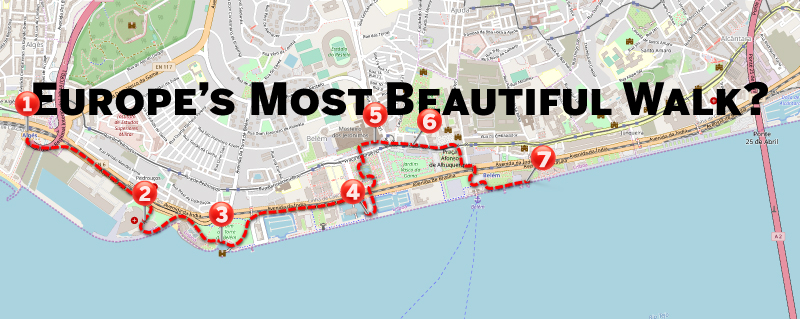
1. Algés train stations
The most beautiful walk in Europe starts with a train to the graffiti-filled station of Algés Station.

2. Champalimaud Foundation
A one kilometer walk from Algés Station leads to a futuristic state-of-the-art research facility that is a great place to snap photos and walk around. Darwin’s Café is located here and has magnificent views with outdoor seating that offers views of the water and modern architecture.
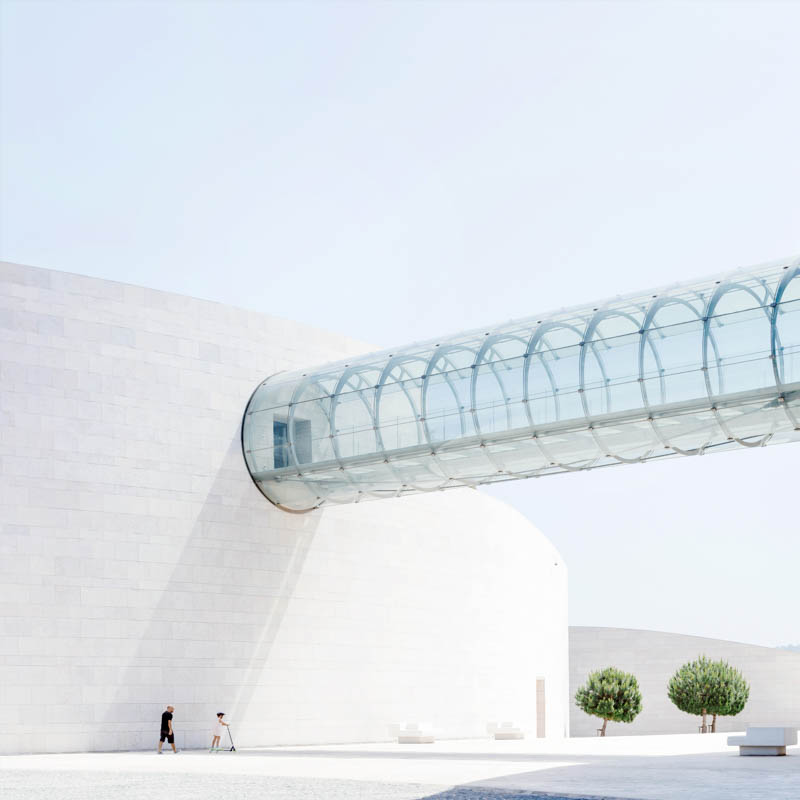
3. Belém Tower
A four minute walk from Champilmaud is the iconic Belém Tower, which appears to be built in the middle of the Tagus river as it is surrounded by water on all sides. The tower was completed in 1519 and is protected as a UNESCO World Heritage Site.
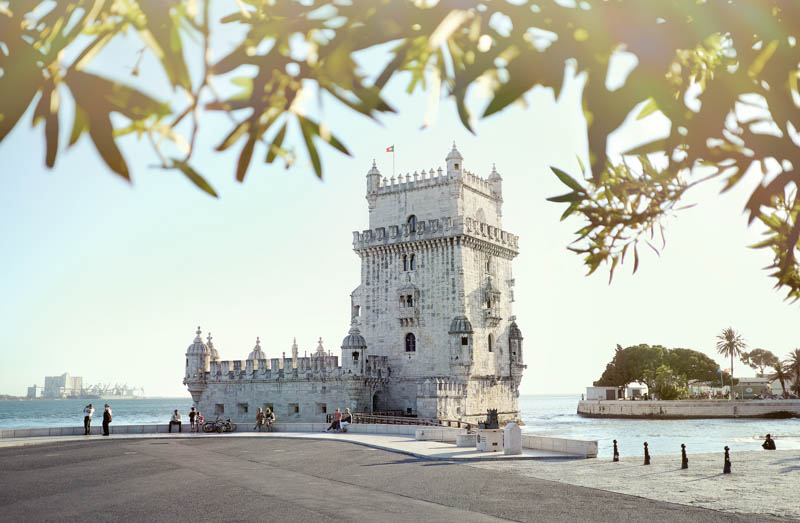
4. Padrão dos Descobrimentos (Monument of Discoveries)
A beautiful one kilometer walk along the Tagus boardwalk, which is lined with charming spots to get a drink or coffee, is Padrão dos Descobrimentos (Discoveries Monument). It is a massive monument that honors Portugal’s Age of Discovery and includes 30 statues of historical figures, such as Vasco da Gama and Ferdinand Magellen.
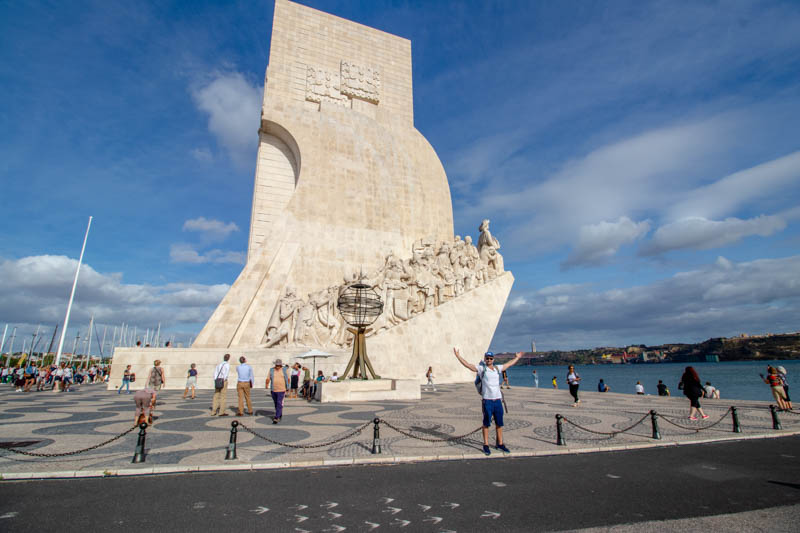
5. Jerónimos Monastery
A five minute walk through a beautiful plaza and fountain (Jardim da Praça Imperio) is the second of the two UNESCO World Heritage Sites in Lisbon: Jerónimos Monastery (Hieronymites Monastery). The doors opened in 1501, and it took 100 years to complete. Be sure to visit Vasco de Gama’s tomb, which is located here.
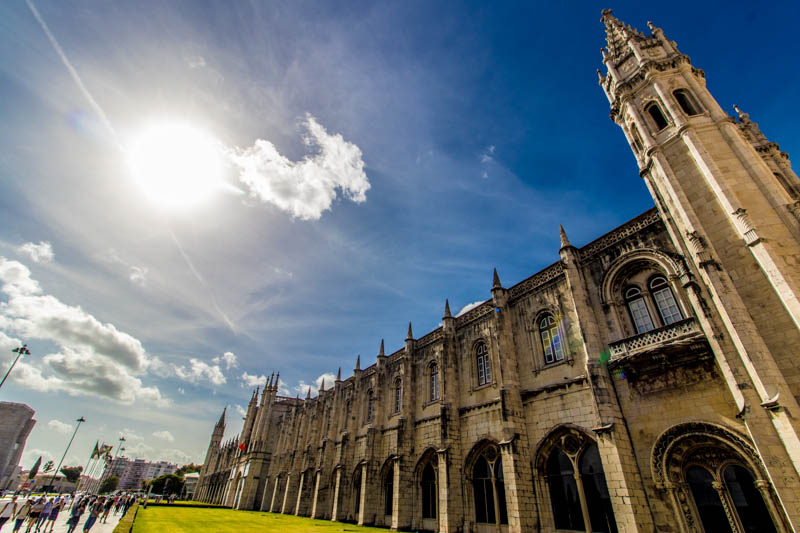
6. Pastéis de Belém
Located next door to the Monastery is the world-famous Pastéis de Belem. Here you can find the buttery, flaky delicious custard tarts called pastel de nata. Although you can find the tarts almost everywhere in the city, the delicacy originated here. Only six people in the world know the recipe, which has been kept a secret since 1837.

7. MAAT
The Museum of Art, Architecture, and Technology is the final stop on this incredible walk. It is a 1.3 kilometer walk from the Monastery and the ideal setting for sunset. The smooth ceramic rooftop connects with the waterside boardwalk, and is the perfect end to your stroll.

Destinations
There are so many places to enjoy in and around Lisbon that it can be overwhelming to decide what to choose. After a year of living in Lisbon, I’ve whittled down the places to go and places to eat to help make the decision easier for you. Here is a list of the places that I enjoyed the most and created the best memories during my time living in Lisbon, which includes well-known and famous spots, as well as a few hidden gems.
LX Factory
With more than 50 shops, restaurants, cafes, and bars, this former industrial fabric complex has become an art and gastronomy stop. Be sure to head to the old worker’s lounge located on the 4th floor and enjoy Rio Marviliha, a gastro bar that offers amazing views of the Tejo river.
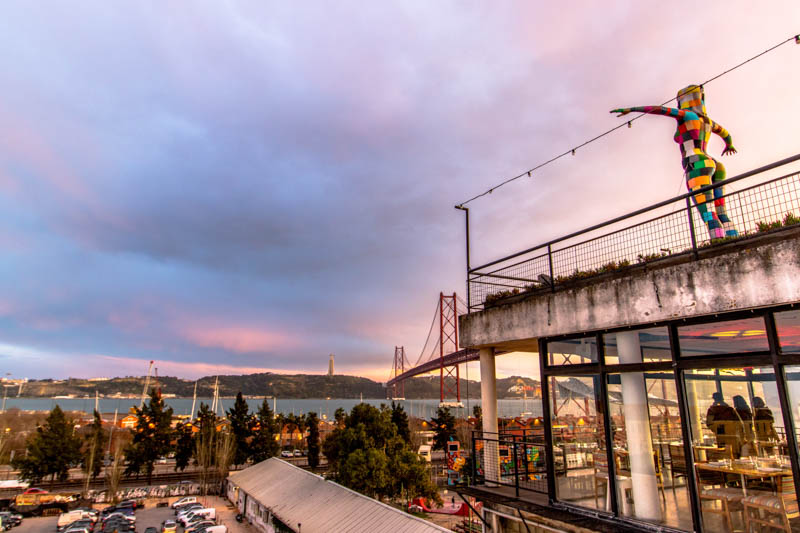
Sintra & Pena National Palace
Nineteen miles from Lisbon is the resort town of Sintra located in the hills of the Serra de Sintra or Sintra Mountains. On top of one of the hills is the grand Palacio Nacional de Pena or Pena Palace. This colorful palace was completed in 1854 and is considered one of the world’s most impressive palaces.
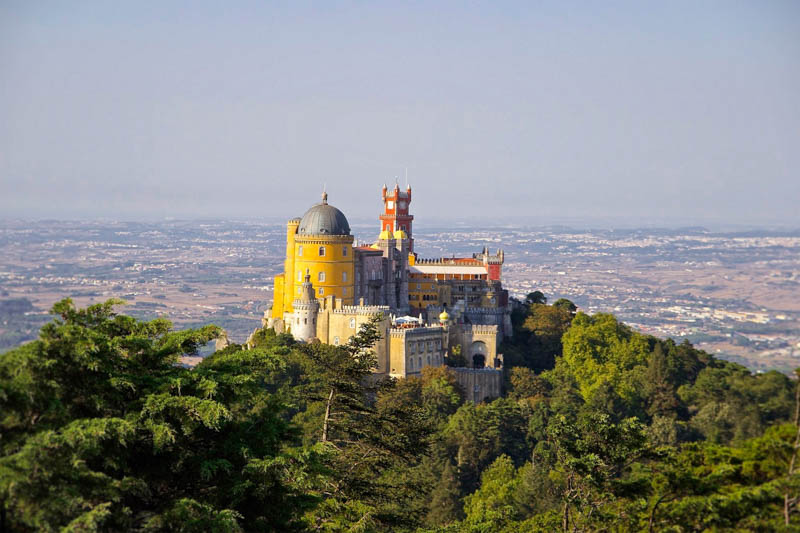
Elevador da Bica
This is the most iconic cable car route. Two small cars take turns ascending down the steep and narrow street in route to Bairro Alto, passing colorful buildings, little shops and quaint restaurants.
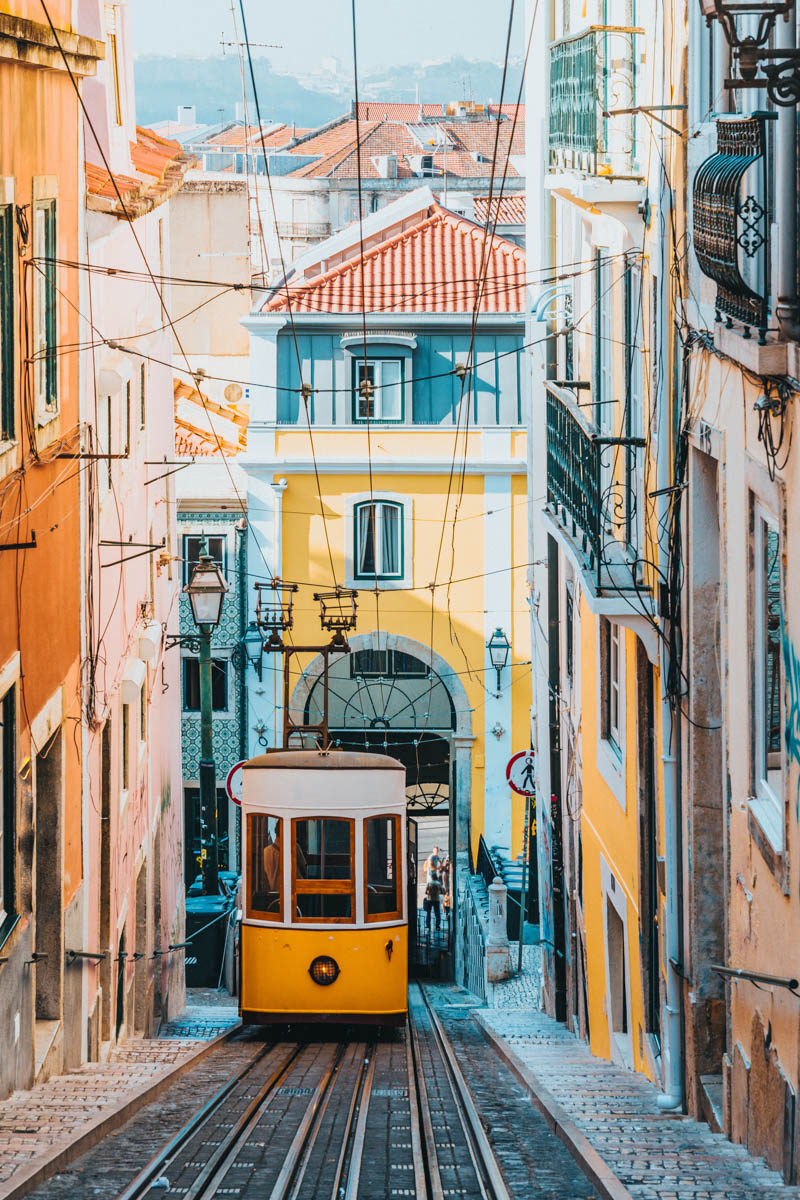
Miradouro da Graça
Enjoy spectacular views of the different neighborhoods of Lisbon while enjoying a drink. It’s one of the best views in the city and locals and tourists come here to watch spectacular sunsets.
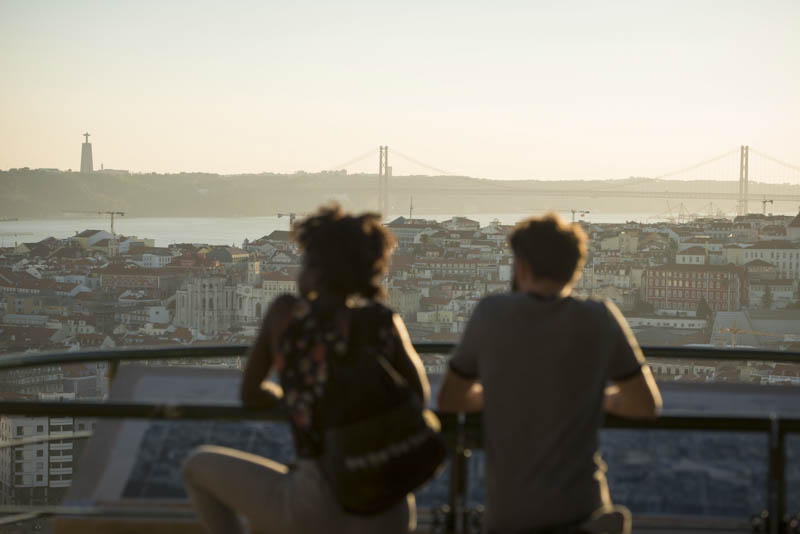
Guincho Beach
This popular surf beach is one of Lisbon’s most beautiful beaches. The beach is surrounded by dramatic cliffs and located near Cascais and is a great place to spend the day. For the more adventurous folks, you can rent a bike in Cascais and ride a cycle path on the 10 kilometer round trip ride that follows the dramatic cliff coastline and passes many points of interest, including the Boca do Inferno.
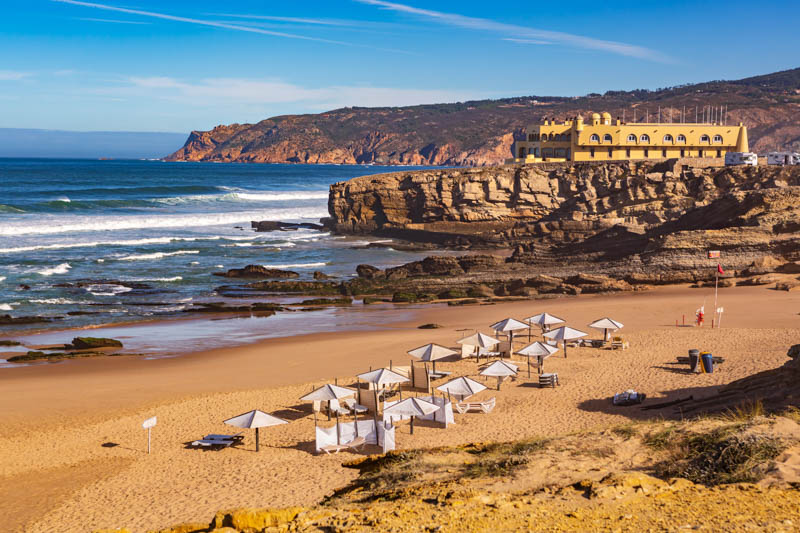
Ponta do Sal
Located in Estoril between Caiscais and Lisbon is a great little cafe that sits atop a cliff overlooking a popular surf spot. This is a great place to get a snack and take in a peaceful sunset.
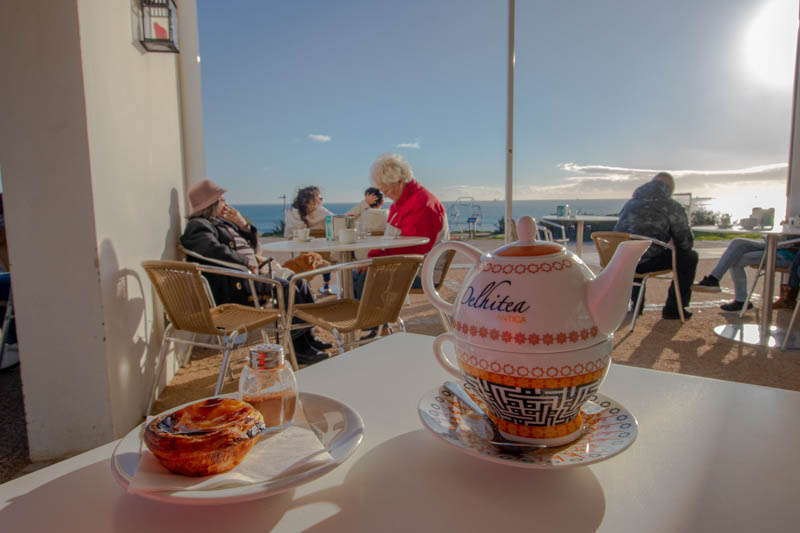
Cascais
The decorative and charming town of Cascais was a former summer retreat for Portuguese nobles. Now it has become a tourist hotspot, with boutiques, charming streets, beautiful beaches, ornate mansions, and so many great gastronomy options. Cascais is an easy day trip from Lisbon, and for those looking for a more relaxed pace than the city, this may be the place for you. Cascais is located 55 kilometers west of Lisbon, so if you plan to stay overnight, note that the accommodations tend to be comparatively more expensive than most places in and around Lisbon.
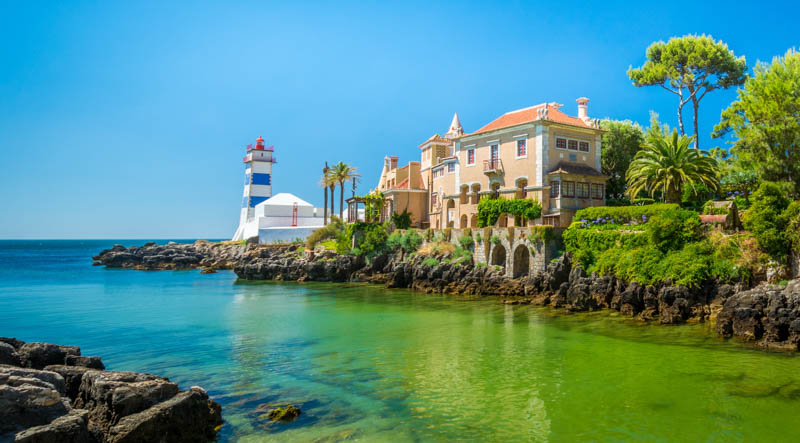
Eduardo VII Park
This large, beautiful public park is located on one of the highest hills in the city and often hosts, fairs, concerts, and exhibitions. It’s one of the city’s largest parks and allows you to see past the main shopping district of Liberdade Avenue to the Tejo River. This park offers a unique perspective of the city.
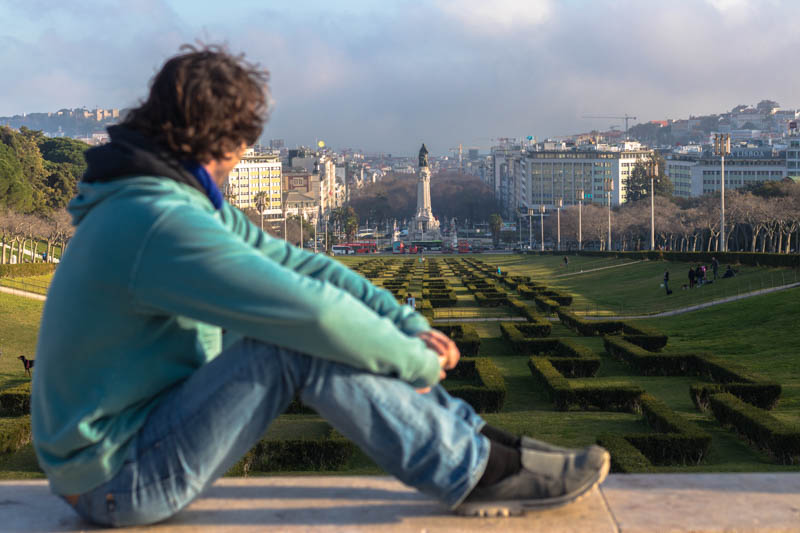
Boca do Inferno
Boca do Inferno, which means Hell’s Mouth, is a scenic rock formation that is located near Cascais (2 km). Here you will find a large rock archway that was formed from years of waves pounding against the cliffs. It’s a short walk or bike ride from Cascais and a popular tourist attraction.

Lost In Esplanada Bar
Spectacular views, great food, and beautiful views. This eclectic bar/restaurant is one of Lisbon’s well-kept secrets. The food is a mix of Indian and Portuguese cuisine. The colorful artwork, zen music, and cozy interior make it the perfect place to relax, unwind, and enjoy the view.
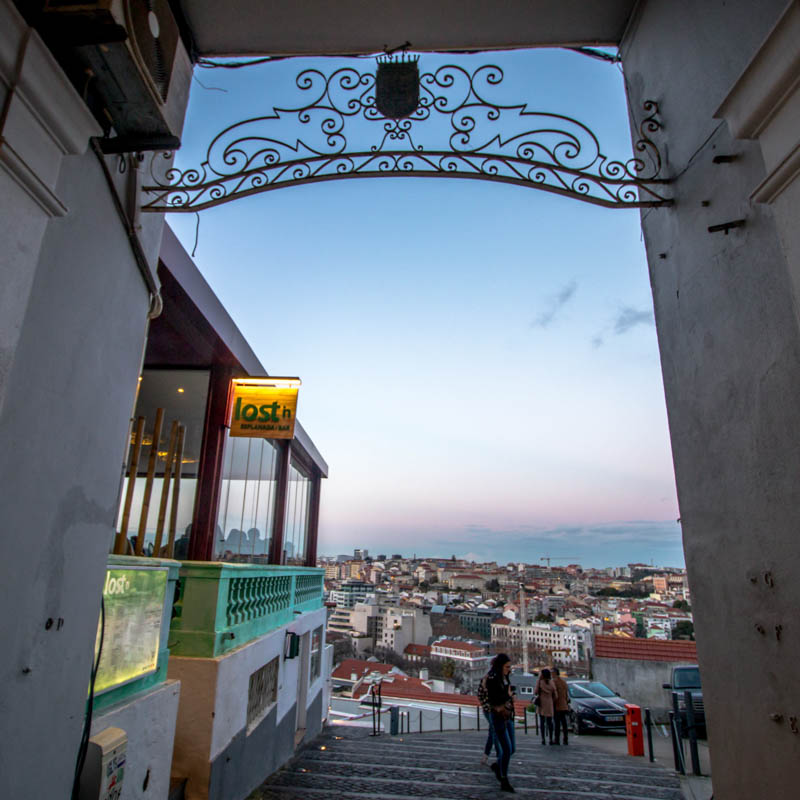
Time Out Market Lisbon
Conveniently located across the street from Cais de Sodres metro/train stations is Timeout Market. There are 26 restaurants, eight bars, and fantastic music venues located here. Their motto is “bringing the very best of the city under one roof.” They succeed in doing just this.
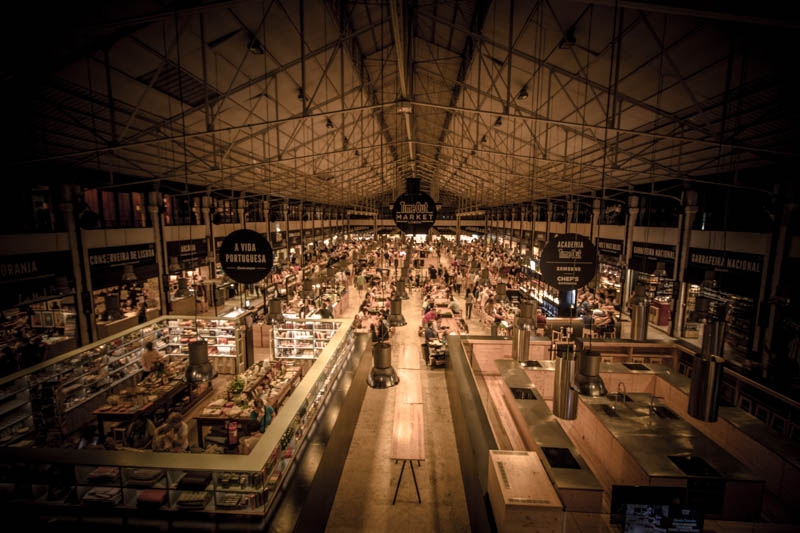
Living in Lisbon
Rent in Lisbon
The first thing to know about moving to and living in Lisbon is that it is difficult to find reasonably priced places to rent long term. With the rise in tourism and the arrival of airbnb, many landlords have turned to short term rentals. Short term rentals are increasingly in high demand and offer landlords better profit margins. Another reason that encourages short-term rentals is that a fiador or financial guarantor is needed if you are a foreigner wanting to rent long-term.
Low cost of living (minus housing)
Besides rent and housing, Lisbon arguably has the lowest cost of living in Western Europe. The food is terrific and reasonably priced. An inexpensive meal with a drink will cost you 10 Euros. Utilities, sports, and leisure are also all very reasonably priced.

Local pay and taxes
Another thing to consider when moving to Lisbon is that salaries are low compared to other European countries. Portugal ranks 18th when compared to other countries in the European Union (Average Salary in European Union 2018, 2018). Although the low cost of living in Portugal will make your money go further, you may find yourself short changed when visiting neighboring countries in the region.
Non-residents of Portugal are taxed a flat rate of 25%. If you are working as a resident, taxes will vary anywhere from 14% to 48%. A salary of 40,000 Euros yields a hefty tax of 45%. If you are considering accepting an offer to work in Portugal, be sure that you clarify your potential tax liability and estimated take-home pay with your prospective employer.
Independent Schools in Lisbon

Centuries ago, during the Age of Discovery, Portugal and Lisbon were at the center of the world. Portugal and more specifically, Lisbon, are thriving once again – thanks in large part to the international bailout in 2011 and newly created rental laws during the same year. Since 2011, the unemployment rate has been cut in half and the economy has seen a flood of foreign investors. The once abandoned buildings of the downtown center are getting a makeover and sectors of the city are experiencing significant revitalization.
Lisbon deserves to thrive. It is a gorgeous city ripe with history and natural beauty. There is plenty to do and see. The weather is fabulous. Food is top-notch. The day trips are diverse and plentiful. And the city is very walkable. And maybe, most importantly, Lisbon is one of the cheapest and easiest cities to get to in Europe. So what are you waiting for? Vem conhecer Lisboa.
This article is available and can be accessed in Spanish here.
Average Salary in European Union 2018. (2018, March 15). Retrieved from https://www.reinisfischer.com/average-salary-european-union-2018
Why Go To Lisbon (n.d.). Retrieved from https://travel.usnews.com/Lisbon_Portugal/




